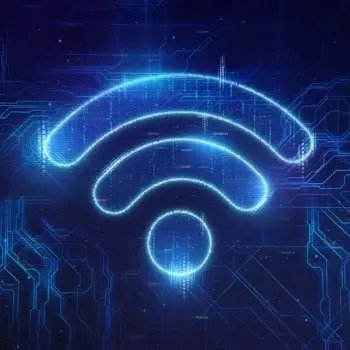What Is a Good WiFi Signal Strength?
If you can’t seem to browse the Internet, the issue might be that your WiFi signal is weak. You can experience a poor signal for a couple of reasons, including being too far from your router, having obstacles around you, or due to network congestion. A reliable WiFi signal strength will get you online. In this post, you’ll learn what constitutes a good WiFi signal strength and how to measure it.
What is a WiFi signal strength?
WiFi signal strength refers to the power level at which the WiFi signal from a router or access point is received by a device on the system. It is measured in decibels relative to a milliwatt (dBm).
Both WiFi signal and speed are equally important for achieving optimal Internet performance. Even though they are closely related, they aren’t the same thing.
Speed is how fast the Internet is delivered from your Internet service provider (ISP) to your business. Signal strength, on the other hand, indicates how well your device can communicate with the WiFi source. A stronger connection means getting the most value from the Internet speeds. You can surf online without staring at the loading screens of your mobile device for a longer time.
How WiFi signals work
WiFi signals use radio waves to transmit data between devices. When you connect to WiFi, your device's wireless adapter converts data into radio signals and sends them to a router. The router then decodes these signals and sends the information to the Internet via a wired connection.
This process also works in reverse. The router receives data from the Internet, converts it into radio signals, and sends them back to your device.
WiFi operates on two main frequency bands: 2.4 GHz and 5 GHz. These bands are like highways, with each band containing multiple channels. The 2.4 GHz band has a more extended range but is more susceptible to interference from other devices, while the 5 GHz band offers faster speeds but has a shorter range.
When you request data, such as loading a webpage, your device sends a signal to the router on a specific channel within one of these bands. The router receives the signal, processes the request, and returns the data to your device on the same channel.

How do you measure WiFi signal strength?
Every connected device needs a stable broadband connection to run online activities. These might be business-related, online classes, or streaming media. The strength of your WiFi signal is all that matters.
Therefore, measuring WiFi signal strength is necessary to assess the quality of a WiFi network. There are various ways we can measure WiFi signal strength. These are:
- mW (milliwatts)
- dBm (decibel-milliwatts)
- RSSI (received signal strength indicator)
Milliwatts (mW)
Milliwatts (mW) provide the most accurate measurement of WiFi signal strength. This unit directly measures the power of the signal being transmitted or received.
However, measurements often involve many decimal places due to WiFi signals' low transmit power. For example, a WiFi signal strength of -70 dBm becomes 0.0000001mW.
The many zeros after the decimal point make it cumbersome to read and interpret. Scientists use milliwatts in highly technical applications where exact power measurements are paramount.
Decibel-milliwats (dBm)
Network engineers use decibel-milliwatts (dBm), a negative scale running from 0 to -100, to simplify the representation of signal strength, especially given the low power levels involved. The dBm scale is a logarithmic scale that expresses power levels in relation to one milliwatt.
It also provides a more manageable way to express these very low power levels without dealing with numerous decimal places. The values are expressed as negative numbers for WiFi signals less than zero dBm. For instance, a signal strength of -30 dBm is powerful, while a signal of -90 dBm is weak. A number closer to zero indicates a stronger signal.
Received Signal Strength Indicator (RSSI)
The vast majority of device manufacturers use an additional measurement tool called RSSI (Received Signal Strength Indicator) to measure signal strength. It's a standard metric in wireless communication systems. RSSI values are often displayed graphically or numerically as signal bars.
It is worth noting that RSSI is a relative index, meaning its values can vary between different devices and manufacturers. For example, one device might measure RSSI on a scale from 0 (no signal) to 60 (maximum signal), while another might use a scale from 0 to 100 or even 0 to 255.
This variability makes RSSI less accurate than dBm measurements. Despite this, RSSI is widely used due to its simplicity and ease of interpretation for end-users.
RSSI is usually converted to dBm. Higher RSSI values indicate stronger signals. However, each WiFi adapter manufacturer might have a different RSSI scale.
What is a good WiFi signal strength?
The biggest debate is what is the ideal WiFi signal strength? Technically speaking, when it comes to WiFi signal strength, the term "good" is subjective. Anything between -50 dBm and -67 dBm is considered good for most online activities.
What constitutes a good WiFi signal varies based on the online activities you intend to perform. The type of Internet users present in your household also determines a good signal strength for you.
Higher-need users engage in more demanding Internet activities, such as streaming high-definition (HD) videos, downloading large files, and video conferencing for work or social interactions that require low latency. For these activities, a WiFi signal strength of -50 dBm or better is ideal.
Average-need users demand a bit more from their day-to-day Internet service. Their typical activities might include using Voice over IP (VoIP) services, streaming standard definition videos on platforms like YouTube, and operating smart home devices like smart speakers. A WiFi signal strength of around -60 dBm or better is recommended for these users.
Lower-need users typically engage in light Internet activities that do not require much bandwidth. Everyday activities for this group include browsing standard web pages and sending emails. For these users, a WiFi signal strength of around -70 dBm is sufficient.
Guidelines for WiFi signal strength
Here is the general guideline for good WiFi strength.
| Signal strength | Quality to expect | Performance |
| -30 dBm | Excellent | This is as close to the router as possible and is only achievable in some practical scenarios. |
| -50 dBm | Very good | Suitable for any online activity, including HD video streaming, gaming, and large file downloads. |
| -60 dBm | Good | Reliable for most online activities, including video streaming, web browsing, and online gaming. |
| -70 dBm | Okay | Not reliable, but it's mostly sufficient for basic web browsing, email, and some streaming, but could result in buffering. |
| -80 dBm | Not good, weak | Minimum value for basic connectivity. |
| -90 dBm | Unusable | Highly likely to result in connectivity issues and poor performance for most online activities. |
Why does a WiFi signal strength matter?
Nowadays, Internet access is recognized as a need. When professionals are working from home, teachers teach through the web, and students study online, a good broadband connection is what we need to get through our day.
With the rise of wireless networks and technology, all kinds of devices, including home appliances, IoT devices, and security cameras, rely on WiFi to function correctly. Without a solid WiFi connection, they can’t communicate effectively.
Several issues with weak WiFi include:
- Poor quality for video and voice calls
- Interruptions and buffering when streaming videos
- Slows upload and download speeds
- Increased lag for online gaming
- Smart devices not working reliably
- Interrupted user experience when browsing the web
Though it may take time, optimizing your WiFi signal strength is a worthwhile task. A good Internet connection gives you a smooth online experience for everything you need.
What impacts WiFi strength?
Several factors could be affecting your WiFi signal strength. They include the following.
- Router placement. The distance between your device and the router affects WiFi signal strength. Placing the router centrally within the home can help ensure even coverage. Your device should be within 1-3 meters of the router for the best signal. As you move further away, the signal strength begins to drop.
- Physical obstacles. Physical obstructions like walls, floors, and furniture can degrade signal strength. WiFi signals struggle to pass through solid objects like walls. Therefore, the more walls between your device and the router, the weaker your WiFi signal.
- Number of devices. As more devices connect to the network, the bandwidth available per device decreases.
- Interference. Other electronic devices can interfere with your WiFi performance. Devices like baby monitors, microwaves, cordless phones, and even Bluetooth devices operate on similar frequencies, weakening your WiFi signal in the long run.
- WiFi standards. Modern routers using newer standards like WiFi 7 offer better performance than older standards such as WiFi 5.
- Device issues. Sometimes, the problem lies with the device receiving the signal. Older devices may not support the latest WiFi technologies.
If you find that your WiFi isn't working well, it could be that one of these factors is an issue.
How to optimize your WiFi signal strength
Understanding how WiFi signals work can help improve your WiFi setup for better performance. You can try to optimize your WiFi signal strength by following these steps:
- Move your router. Position your router in a central, elevated location within your home.
- Update your router. Ensure your router is up-to-date with the latest technology and hardware.
- Use extenders. Use range extenders or additional routers to expand your WiFi coverage, especially in larger spaces with many obstacles that block the signal.
- Remove unnecessary devices. Regularly check your network for WiFi freeloaders. Too many devices connected to your network can slow it down.
- Remove physical obstructions. Minimize physical obstructions like thick walls, metal objects, and electronic devices that can interfere with your WiFi signal.
- Update your firmware. Keep your router's firmware updated to ensure it has the latest features and security improvements.
You'll likely find that making one or more of these changes will improve your WiFi signal, thus improving your Internet speed and online experience.
How to test WiFi signal strength on your device
You can quickly check your WiFi signal strength using the built-in indicators on your devices. Each device, whether an iPhone, Android phone, Mac, or Windows PC, has a WiFi connection indicator.
This symbol, typically represented by four to five curved bars, shows the strength of your connection. More filled bars mean a stronger signal.
It's helpful to check the signal strength on various devices. This gives you a broader understanding of your WiFi coverage. Move around your home or office with each device as you observe the WiFi indicator. Note where the signal is weak or drops.
Frequently asked questions
How do I know if my WiFi connection is strong?
Check for indicators on your device. Five bars indicate the strongest WiFi signal, while one bar indicates the weakest connection.
What is a good signal strength for WiFi?
While a good signal strength is subjective, most consider anything between -50 dBm and -67 dBm as sufficient for a reliable connection.
How do I reset the WiFi?
To reset WiFi, unplug the router and modem, and wait a few seconds. Then, plug them back in and power them on.
What is a good WiFi signal strength in Mbps?
For moderate use, 25 Mbps is sufficient for two devices, but 100 Mbps is better for three or more.

